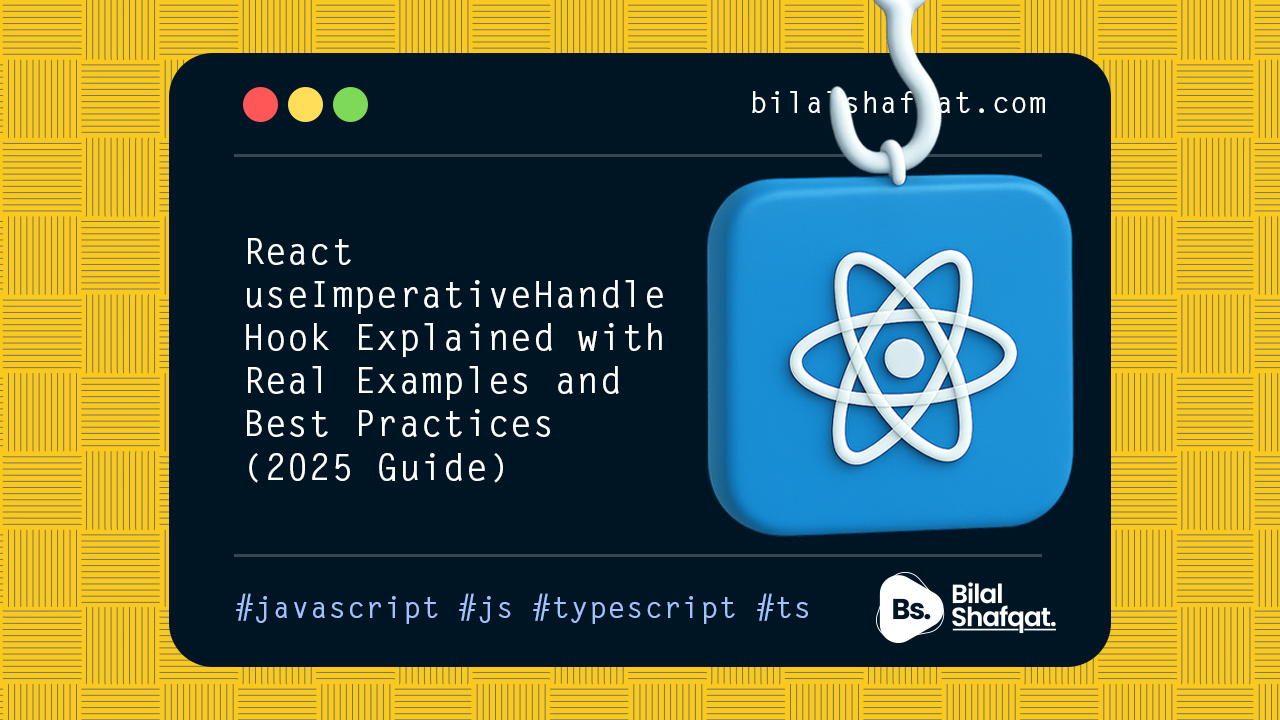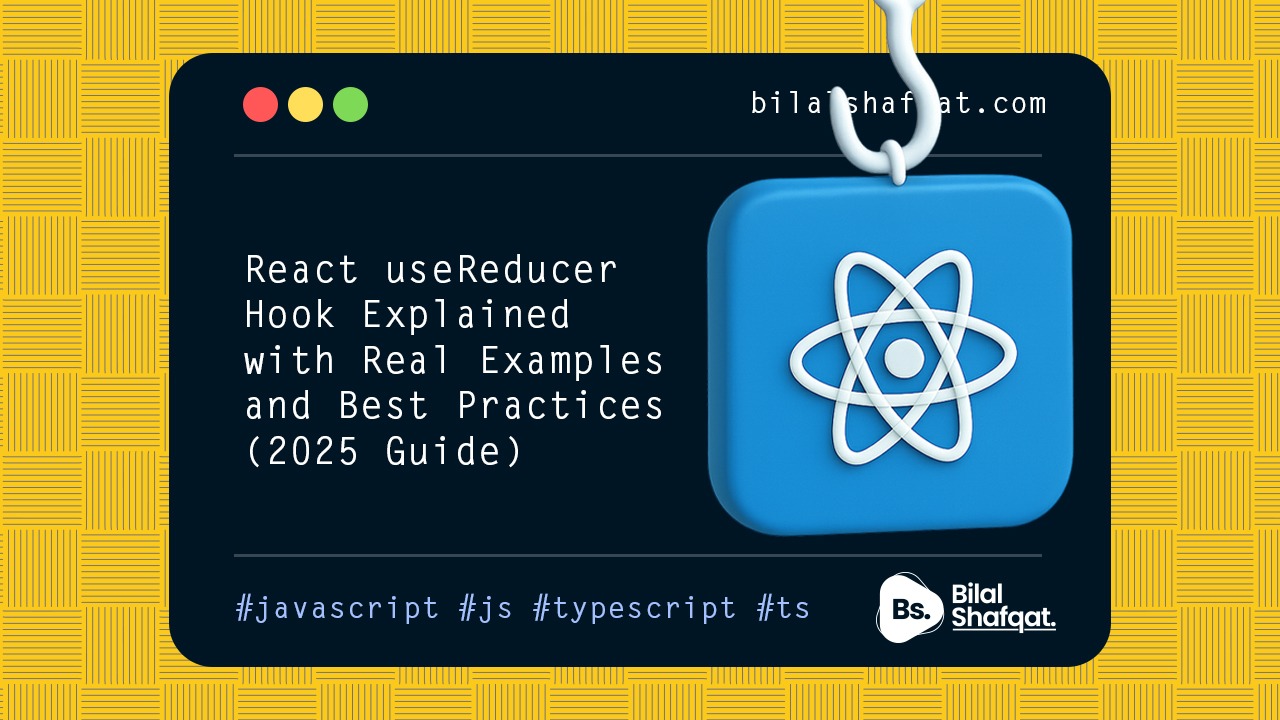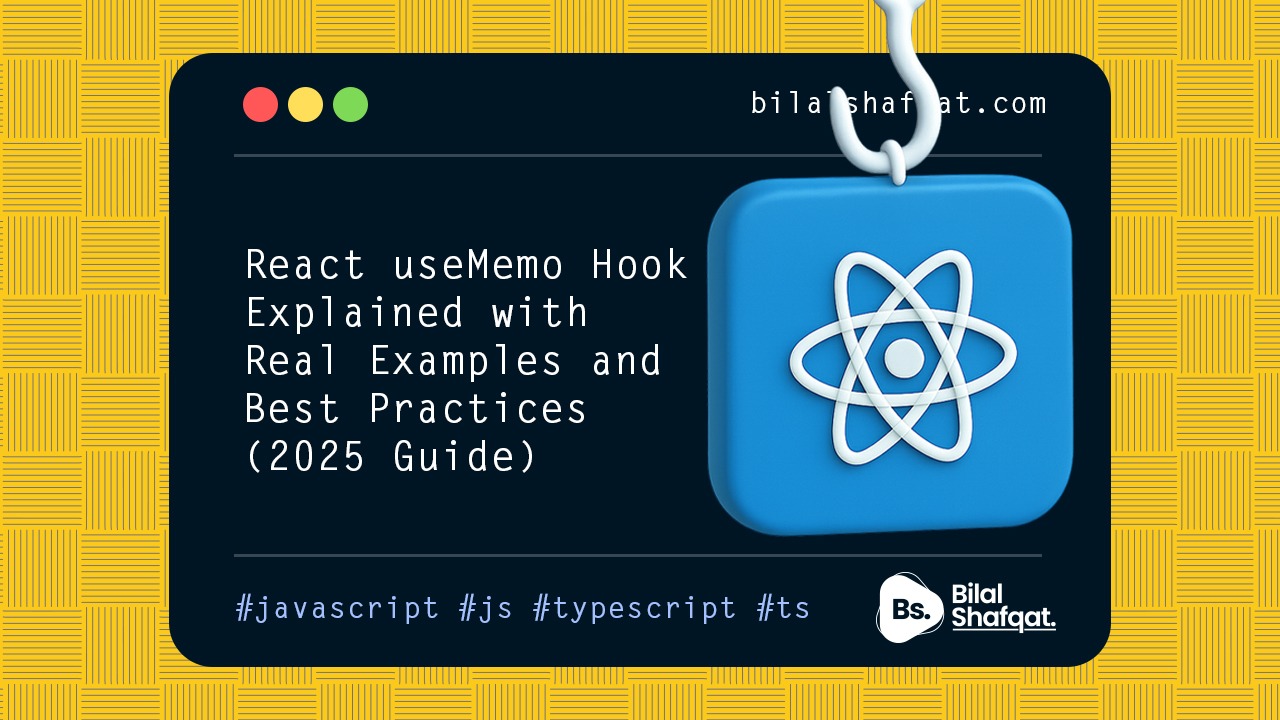
5 Must-Know React Component Patterns for Scalable Code
- bilalshafqat42
- June 8, 2025
- Javascript, Es6, React Js
- 0 Comments
Discover 5 essential React component patterns that help you write clean, reusable, and scalable code. Perfect for beginners and advanced React developers alike.
When working with React, especially on larger or long-term projects, it’s easy to end up with messy, repetitive, or hard-to-maintain code. But React gives us patterns — simple structures and ideas — that make our code easier to read, reuse, and scale.
In this article, we’ll explore 5 React component patterns every developer should know. These aren’t frameworks or libraries — they’re smart ways of organizing your code that work beautifully with React’s component-based structure.
1. Presentational vs Container Components
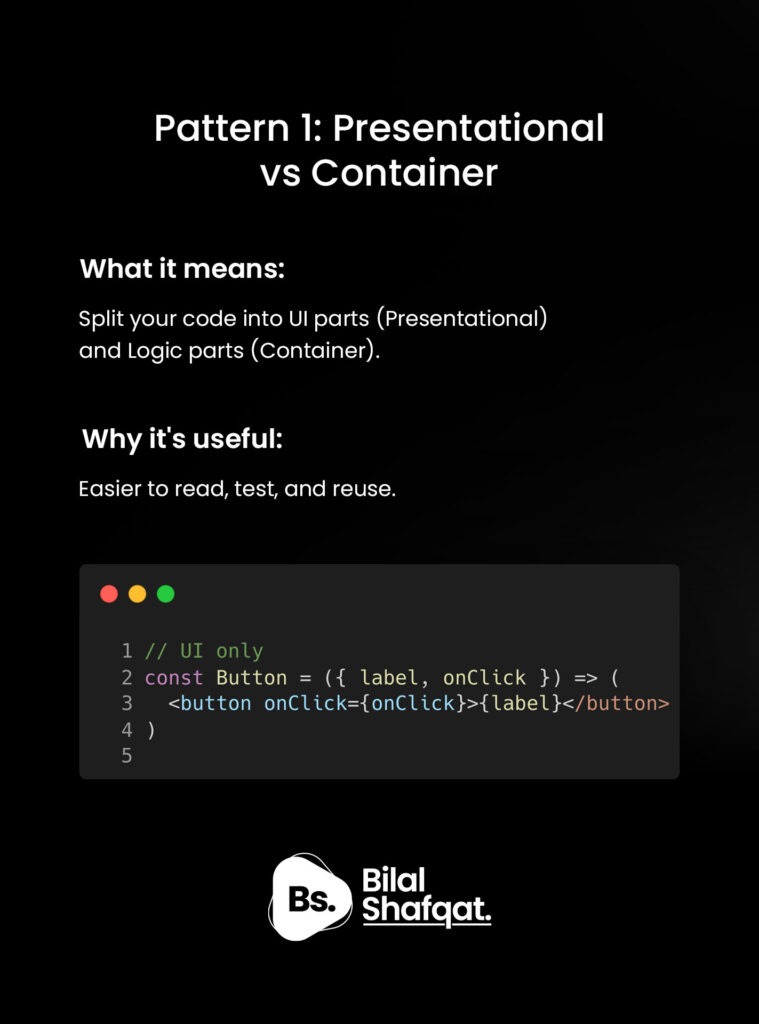
One of the easiest and most powerful ideas to start with is splitting your components into two types:
- Presentational Components: Focus on how things look (UI), are stateless, and receive data via props.
- Container Components: Handle state, logic, and data. Focus on how things work.
// Presentational Component
const UserCard = ({ name, onClick }) => (
<div onClick={onClick}>
<h2>{name}</h2>
</div>
);
// Container Component
const UserContainer = () => {
const name = "Ali";
const handleClick = () => alert(`Hi, ${name}`);
return <UserCard name={name} onClick={handleClick} />;
};
This pattern helps you reuse UI components and keep your code clean and testable.
2. Higher-Order Components (HOC)

A Higher-Order Component is a function that takes a component and returns a new one — with extra features or props.
Commonly used in libraries like React Redux and React Router.
const withLoading = (Component) => {
return function WithLoadingComponent({ loading, ...props }) {
if (loading) return <p>Loading...</p>;
return <Component {...props} />;
};
};
// Usage
const UserList = ({ users }) => (
<ul>{users.map((u) => <li key={u.id}>{u.name}</li>)}</ul>
);
const UserListWithLoading = withLoading(UserList);
3. Render Props
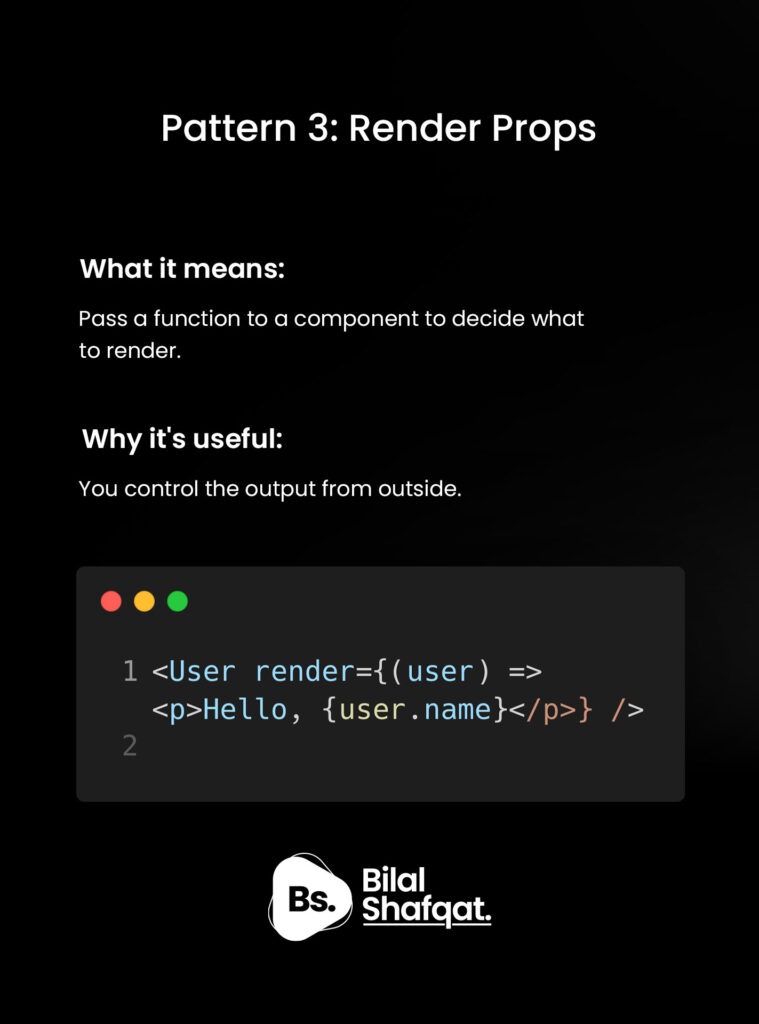
A Render Prop is a function prop that a component uses to know what to render.
const MouseTracker = ({ render }) => {
const [pos, setPos] = React.useState({ x: 0, y: 0 });
const handleMove = (e) => setPos({ x: e.clientX, y: e.clientY });
return <div onMouseMove={handleMove}>{render(pos)}</div>;
};
// Usage
<MouseTracker render={(pos) => <p>Mouse at {pos.x}, {pos.y}</p>} />;
This gives full flexibility over how the component displays data.
4. Compound Components

Compound components allow you to build related components that work together and share internal state.
const Tabs = ({ children }) => {
const [activeIndex, setActiveIndex] = React.useState(0);
return React.Children.map(children, (child, index) =>
React.cloneElement(child, {
isActive: index === activeIndex,
onClick: () => setActiveIndex(index),
})
);
};
const Tab = ({ label, isActive, onClick }) => (
<button onClick={onClick} style={{ fontWeight: isActive ? "bold" : "normal" }}>
{label}
</button>
);
// Usage
<Tabs>
<Tab label="Tab 1" />
<Tab label="Tab 2" />
</Tabs>
This is perfect for things like tabs, modals, or dropdown menus.
5. Custom Hooks
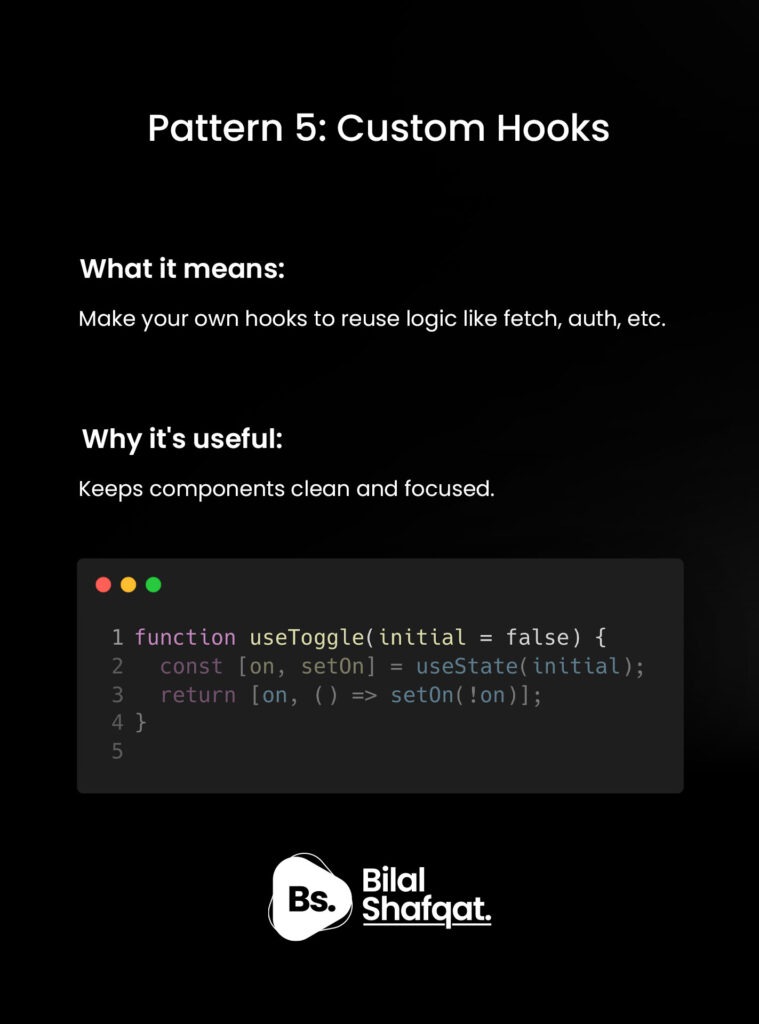
Custom hooks let you extract logic into reusable functions using useState, useEffect, etc.
function useToggle(initial = false) {
const [value, setValue] = React.useState(initial);
const toggle = () => setValue((v) => !v);
return [value, toggle];
}
// Usage
const Switch = () => {
const [isOn, toggle] = useToggle();
return <button onClick={toggle}>{isOn ? "ON" : "OFF"}</button>;
};
This keeps components clean and promotes DRY code.
💡 Why These Patterns Matter
- 🚀 Scalable architecture
- 📦 Reusable logic and components
- 🧼 Cleaner, testable code
- 👥 Easier team collaboration
These patterns make a real difference when working on real-world projects — from solo builds to large enterprise apps.
🔗 Related Post
New to React? Make sure you’ve mastered the basics: 7 JavaScript Concepts to Learn Before React
📚 FAQs
Q1: Are these official React patterns?
No, but they’re widely accepted best practices in the React community.
Q2: Should I use all these patterns in one project?
Use the ones that fit your app’s needs. The goal is clarity and reusability.
Q3: Are hooks better than HOCs or render props?
Hooks simplify a lot of things, but each pattern has its use case.
Q4: What’s the easiest pattern to start with?
Start with Presentational vs Container — it’s simple and effective.
📌 Conclusion
React is powerful — but using the right patterns can make it even better.
By applying these 5 component patterns, you’ll write code that’s:
- 🧠 Smarter
- ✅ Easier to test
- 📈 Ready to scale
👉 Save this post. Bookmark it. And share it with your dev friends!
📖 Want more? Browse more tutorials at bilalshafqat.com


